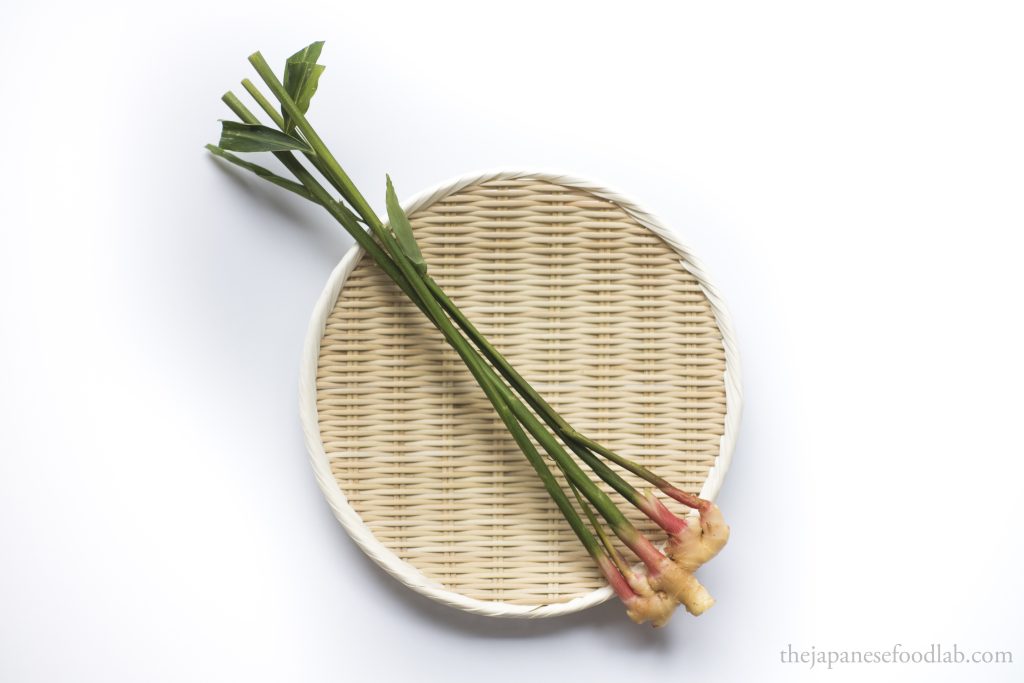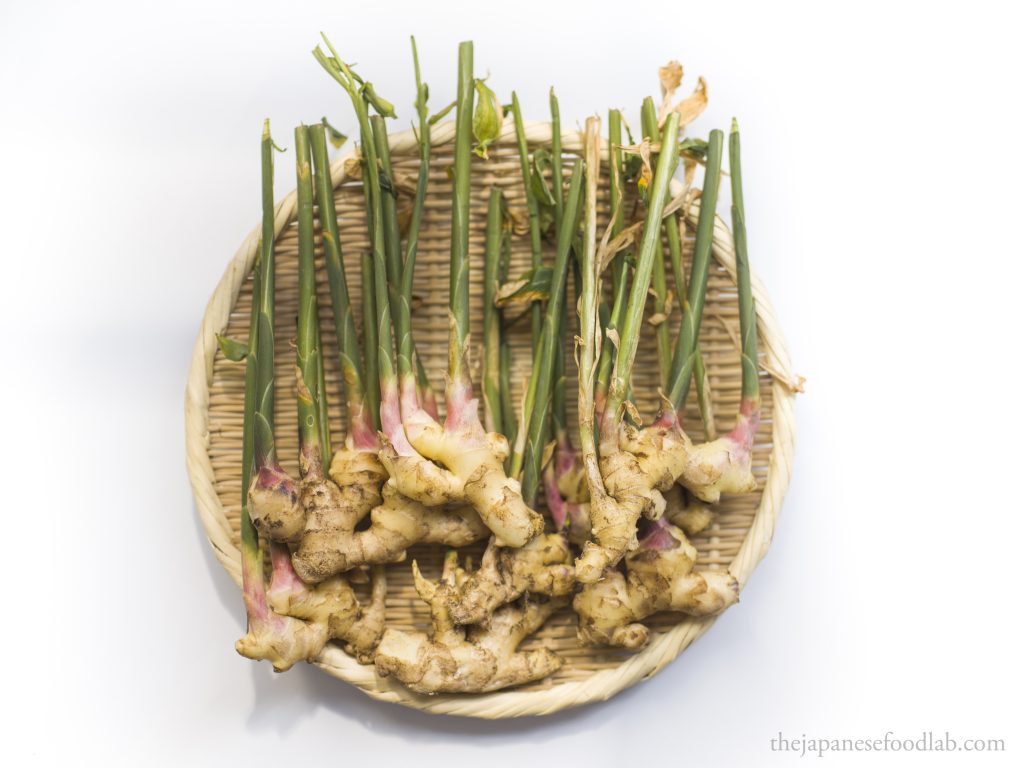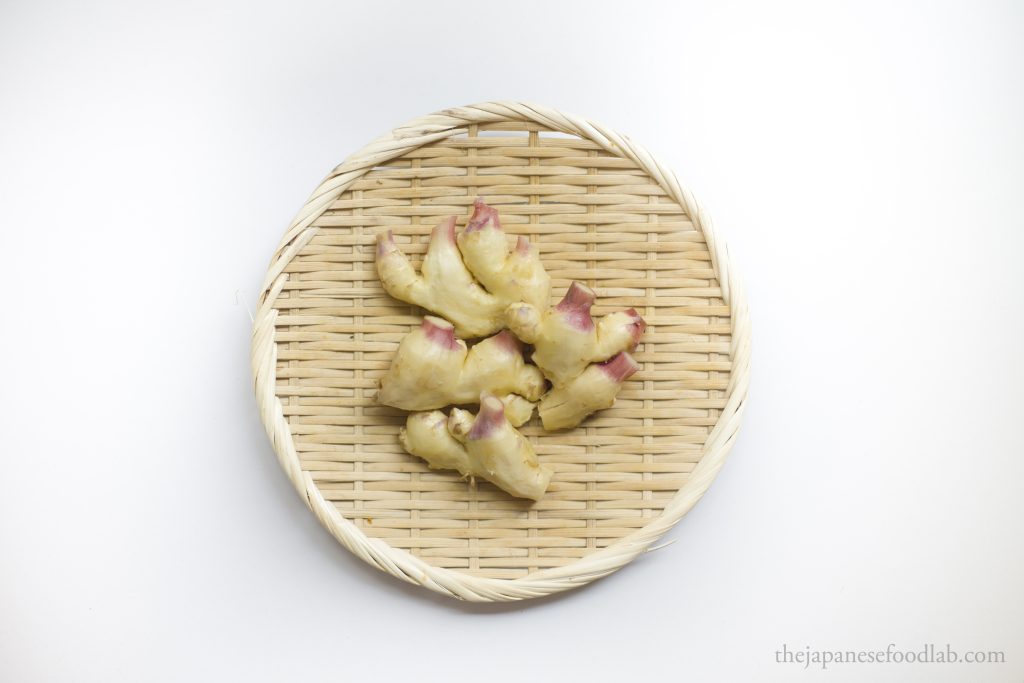Ginger used in Japan can be broadly classified into three main groups based on their stage of growth:

Hajikame ginger (はじかみ/矢生姜)
Firstly, you have hajikame ginger (はじかみ/矢生姜) where the entire ginger plant is extremely young and thin, with the actual ginger rhizome being thinner than a pencil and more cylindrical. The key feature of hajikame ginger is that the lower stem of the ginger has yet to become green and grow leaves and is instead a bright red color. Because of this, the lower stem is still extremely tender and is pickled alongside the rhizome. Think of it like pocky but made from ginger. This kind of ginger is the most rare of the three because it’s harvested at such a young age, meaning that the yield is very low. Pickled hajikame ginger is usually served with grilled fish, and is rarely eaten with sushi. Raw hajikame ginger is usually served with the upper stem and leaves that have turned green still attached, which are then trimmed off before pickling. You might also find this ginger under the name leaf ginger (hashoga/葉しょうが) and brush ginger (fudeshoga/筆しょうが)

New ginger (shinshoga/新しょうが)
New ginger is the kind of ginger that we are most interested in. It is harvested near the spring and summer and is a light yellowish-white in color characterized by pink tips. This is the ginger that all high end sushi establishments use to make their pickled ginger (gari/ガリ). It is harvested before the ginger starts to become fibrous and thus is soft to chew, with a mild spiciness that blends well with the acidity and sugar from the pickling liquid. Older ginger on the other hand is too spicy to balance out by pickling. This type of ginger is typically seasonal though you can sometimes find new ginger that has been stored so that it can be supplied to restaurants all year round, but is seldomly seen in grocery stores as they slowly lose their characteristic pink tips and thus lose their visual appeal to customers. That doesn’t matter in restaurants where the ginger is peeled, cooked and processed before consumption. This ginger is not usually sold with the stem or leaves attached unless you buy them directly from farmers.

Ohmi ginger (大ショウガ/近江ショウガ)
The last kind of ginger is also the most common, known as your generic ginger, or large ginger (大ショウガ/近江ショウガ). This ginger is fully matured before harvesting and is stored away so that it can be sold all year round. Ginger in this form can be found in almost every country in the world. It is darker and more uniform in color with no trace of pink colouration anywhere. Of the three kinds of ginger, it has the highest level of spiciness and is typically used in cooking. The spiciness of the ginger makes it less suitable for pickling as it will overpower the taste of sushi and can be quite fibrous to bite into. Occasionally places trying to save money or places with no access to younger forms of ginger will use this as an accompaniment to sushi.